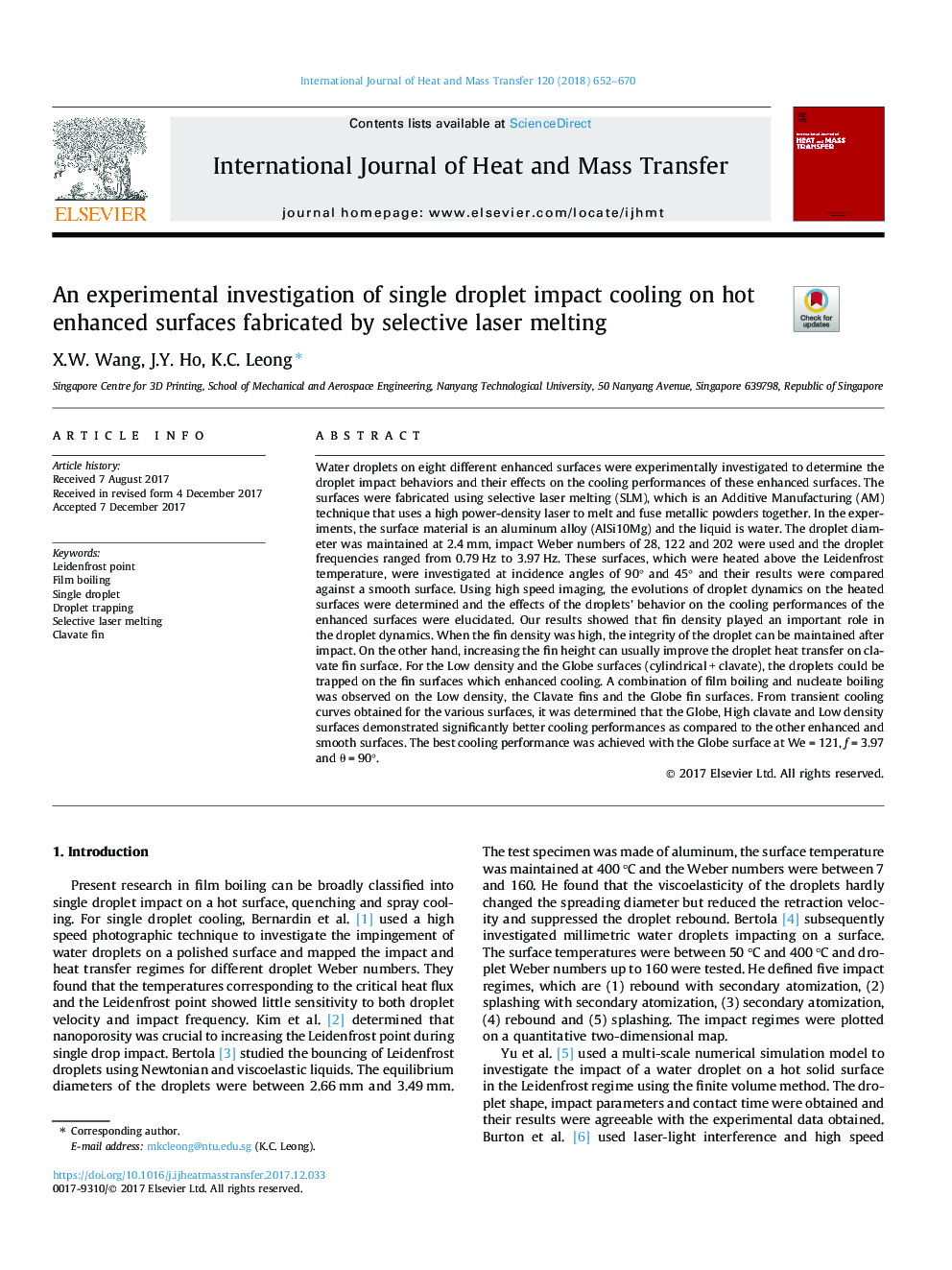| Article ID | Journal | Published Year | Pages | File Type |
|---|---|---|---|---|
| 7054624 | International Journal of Heat and Mass Transfer | 2018 | 19 Pages |
Abstract
Water droplets on eight different enhanced surfaces were experimentally investigated to determine the droplet impact behaviors and their effects on the cooling performances of these enhanced surfaces. The surfaces were fabricated using selective laser melting (SLM), which is an Additive Manufacturing (AM) technique that uses a high power-density laser to melt and fuse metallic powders together. In the experiments, the surface material is an aluminum alloy (AlSi10Mg) and the liquid is water. The droplet diameter was maintained at 2.4â¯mm, impact Weber numbers of 28, 122 and 202 were used and the droplet frequencies ranged from 0.79â¯Hz to 3.97â¯Hz. These surfaces, which were heated above the Leidenfrost temperature, were investigated at incidence angles of 90° and 45° and their results were compared against a smooth surface. Using high speed imaging, the evolutions of droplet dynamics on the heated surfaces were determined and the effects of the droplets' behavior on the cooling performances of the enhanced surfaces were elucidated. Our results showed that fin density played an important role in the droplet dynamics. When the fin density was high, the integrity of the droplet can be maintained after impact. On the other hand, increasing the fin height can usually improve the droplet heat transfer on clavate fin surface. For the Low density and the Globe surfaces (cylindricalâ¯+â¯clavate), the droplets could be trapped on the fin surfaces which enhanced cooling. A combination of film boiling and nucleate boiling was observed on the Low density, the Clavate fins and the Globe fin surfaces. From transient cooling curves obtained for the various surfaces, it was determined that the Globe, High clavate and Low density surfaces demonstrated significantly better cooling performances as compared to the other enhanced and smooth surfaces. The best cooling performance was achieved with the Globe surface at Weâ¯=â¯121, fâ¯=â¯3.97 and θâ¯=â¯90°.
Related Topics
Physical Sciences and Engineering
Chemical Engineering
Fluid Flow and Transfer Processes
Authors
X.W. Wang, J.Y. Ho, K.C. Leong,
